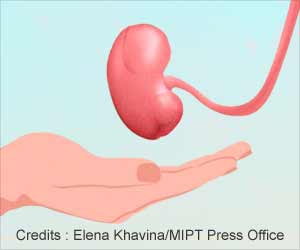Individuals diagnosed with monkeypox discovered that the clinical decision support system, EvalMpox, effectively guided medical care for those exhibiting a rash.

Separating the rash from the chaff: novel clinical decision support deployed during the mpox outbreak
Go to source). The research is published in Infection Control and Healthcare Epidemiology.
‘Patients diagnosed with #monkeypox found the clinical decision support system, EvalMpox, effective in guiding medical care. #infectiousdisease’





“We built a novel decision support tool embedded in the electronic medical record that guides clinicians on crucial features of the physical examination and on important questions to ask patients with possible mpox,” said lead author Jacob Lazarus, MD, PhD, a physician investigator in the Division of Infectious Diseases within Massachusetts General Hospital’s Department of Medicine, and an instructor in Medicine at Harvard Medical School. EvalMpox: New Tool to Diagnose Mpox
The clinical decision support system, called EvalMpox, proved useful in patients presenting to medical care with a rash. Its utility was assessed in 668 patient visits from more than 100 clinical locations across Greater Boston, Nantucket, Martha’s Vineyard, western Massachusetts, and southern New Hampshire.EvalMpox guided clinicians in asking patients about potential mpox exposures, about symptoms of mpox, and in performing a physical examination to look for the characteristic mpox rash. EvalMpox was then able to use these answers to classify a patient as “likely to have mpox” or “unlikely to have mpox.”
The investigators found that the patients deemed likely to have mpox had similar characteristics compared with patients confirmed to have mpox. These patients were then prioritized for testing, and they were significantly more likely to test positive for mpox than patients deemed unlikely to have mpox.
“Our program identified nearly all cases of mpox diagnosed in the MGB system during the study period, underscoring the value of clinical decision support tools in assisting clinicians with early identification, isolation, and management of patients with communicable diseases like mpox,” said senior author Erica S. Shenoy, MD, PhD, Chief of Infection Control for Mass General Brigham and an associate professor of Medicine at Harvard Medical School.
Advertisement
Similar tools may help to assist clinicians in the identification, evaluation, and management of diverse infectious diseases now and in the future.
Advertisement
Reference:
- Separating the rash from the chaff: novel clinical decision support deployed during the mpox outbreak - (https://www.cambridge.org/core/journals/infection-control-and-hospital-epidemiology/article/separating-the-rash-from-the-chaff-novel-clinical-decision-support-deployed-during-the-mpox-outbreak/E687214C19E81699ECE1500091CEE576#)
Source-Eurekalert









